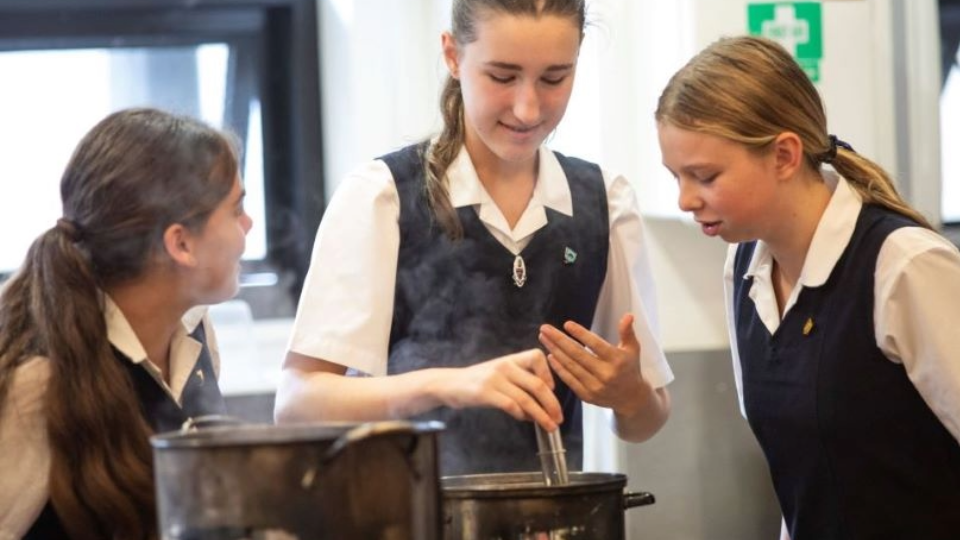
Bush Dyeing Workshop
On Monday 24 and Tuesday 25 March, our school welcomed three inspiring women from the remote Muludja Community on Gooniyandi Country in the Central Kimberley, WA. Elder Helen Malo, a master bush medicine maker and expert bush dyer, along with two other ladies generously shared their cultural knowledge with the Year 9 Design and Technology class.
Here’s what some of our students had to say about this special experience
Perri Lawrence (Year 9)
Last Thursday, the Year 9 Design and Technology students participated in a bush dyeing workshop led by three women from Western Australia. We were first introduced to Aunty Helen and Kirsten, as they spoke to us about who they were in their community, their culture, and their connection to country. Each pattern that we could dye was representative of a different part of Country. One pattern was a dry riverbed during a drought, and another one was a snake trailing down the scarf. They then told us about the specific plants used in the dyes – to make a pink scarf, we used leaves from gum trees, and to make a yellow scarf, we used marigold flowers. To darken the scarves, turning the pink to grey and yellow to green, we used a small amount of rusted metal steeped in hot water. While we worked, the women talked to us about the significance of the scarves. As they live in a rural community in WA, going to hospitals or medical specialists requires the long trip down to Perth. Having a scarf that is dyed with the beautiful plants of their Country to wrap around their shoulders is a great comfort and brings their Country and Culture on the journey. This workshop was an incredible opportunity to learn about a traditional way of designing textiles, as well as how this dyeing practice connects people to their home and heritage.
Luella Elliott (Year 9)
During my Design and technology class last Monday, I experienced Aboriginal silk dyeing using natural methods. They showed us how certain leaves could be used to create colours like green, yellow, pink, and Gray, depending on how they were prepared. It was fascinating to learn that some leaves change colour based on the water temperature or how long they soaked for in the water. The process felt both artistic and connected to nature by watching the silk absorb the dyes in unique patterns made it even more special. After the dyeing, the ladies teaching us talked about the seasonal Aboriginal calendar, explaining how different times of the year affect the plants and materials used for dyeing. It was a hands-on way to appreciate traditional techniques and seeing everyone’s scarves turn out so differently made the experience even more special.
Sarah Kearney
Co-ordinator of Indigenous Education





